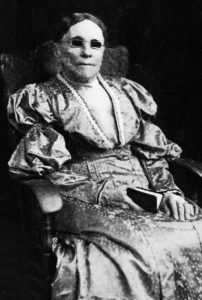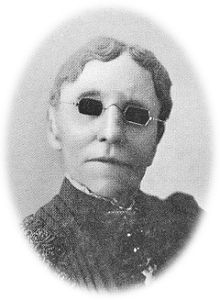
sung, she would inquire about the author, and find it to be one of her own!įanny gave the Christian world such songs as: On several occasions, upon hearing an unfamiliar hymn. She produced as many as seven hymn-poems in one day. Frances, were given her works by hymn book publishers so the public wouldn’t know she wrote so large a number of them. As many as 200 different pen names, including Grace J. “Mother, if I had a choice, I would still choose to remain blind … for when I die the first face I will ever see will be the face of my blessed Saviour.”īlind for all of her life, Fanny Crosby, the greatest hymn writer in the history of the Christian Church, later wrote, “And I shall see Him face to face, and tell the story – Saved by grace.” She saw over 8,000 poems set to music and over 100,000,000 copies of her songs printed.

The Fanny Crosby Memorial Home for the Aged operated from 1925 to 1966, when it was merged into the Bridgeport Rescue Mission.Frances Jane Crosby BORN: MaSouth East, New York She left funds in her will to start a home for homeless men in the Connecticut city, a bequest enlarged by fund-raising by the women of the First Methodist Church and the local federation of churches. Her commitment to mission went with her to Bridgeport and lasted for many decades thereafter. Crosby moved to Bridgeport, Connecticut to care for a sick friend. Some institutions she championed, such as the Bowery Mission in New York City, founded in 1879, still operate today. Crosby helped to promote the “rescue mission” (also called “city” or “gospel” mission) movement, an international, non-denominational phenomenon aimed largely at lifting the poor, often migrants in the late 19 th and early 20 th centuries. Publishers paid poorly for hymn texts.Īlong with her friend Phoebe Palmer, the founder of the Methodist holiness movement, Ms. She lived at various locations in Brooklyn and Manhattan across the years and was often on the edge of poverty. The marriage did not flourish, and the couple lived apart from 1880. Their only child, a daughter, died soon after birth. Crosby married a fellow teacher, Alexander Van Alstyne, in March,1858, who was also blind. Root and Ira Sanky would become prominent musical collaborators The year 1864 saw her first published hymn. She was the first women to formally speak in the chamber of the U.S. presidents and other notables of the day. Crosby became a public celebrity, personally acquainted with U.S. Her first book of poems, “The Blind Girl and Other Poems,” was published in 1844. Her ability to write verse was expressed in hymns as well as poems for civic occasions and newspapers. She was born in Putnam County, New York, lost her sight when only six weeks old, and attended the New York Institution for the Blind in New York City from ages 15 to 23.

The United Methodist Hymnal has seven hymns by her.

Favorites include “Safe in the Arms of Jesus,” “Rescue the Perishing,” “I Am Thine O Lord, “To God Be the Glory,” and “Blessed Assurance” (co-written with Phoebe Knapp). Crosby wrote the words to more than 8,000 hymns. Her hymns were influenced by enthusiastic Methodist singing.īlind from childhood, Ms. Ecumenical in spirit, she belonged to the Methodist Episcopal Church but spent some years taking part in Baptist and Presbyterian congregations.

While known today primarily as a prolific hymn writer, Fanny Crosby (aka Fanny Van Alstyne and Frances Jane Crosby) was also an influential figure in the “rescue mission” movement of the late 19 th century, notably in New York City where she lived most of her adult life.


 0 kommentar(er)
0 kommentar(er)
